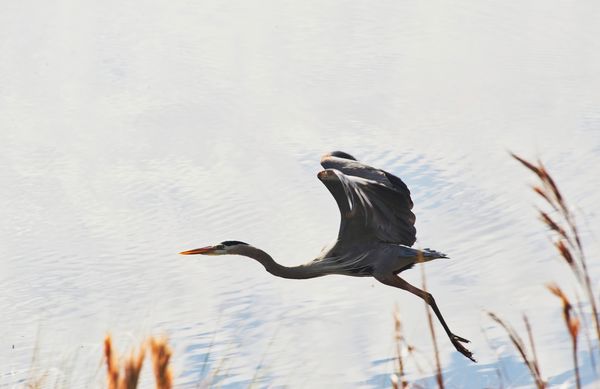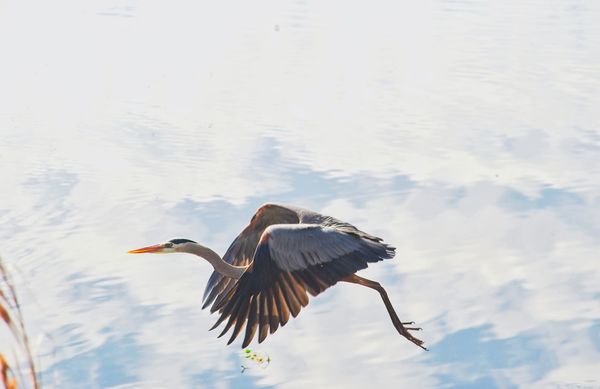Check out Landscape Photography section of our forum.
Some BIF picture
Feb 6, 2018 17:37:19 #
These were taken with a Nikon D3 and 300mm lens at f/11

(Download)

(Download)

(Download)

(Download)

(Download)

(Download)

(Download)

(Download)

(Download)

(Download)
Feb 6, 2018 18:30:12 #
A few observations and questions:
It seems you missed the focus in the majority of these but more troubling to me is: the WB seems to be all over the place? Why you shot these with ISO 1250? It seems there was a lot of available light. You could have chosen a lower f stop to keep you shutter fast and you ISO lower which would have resulted in better results IMO.
It seems you missed the focus in the majority of these but more troubling to me is: the WB seems to be all over the place? Why you shot these with ISO 1250? It seems there was a lot of available light. You could have chosen a lower f stop to keep you shutter fast and you ISO lower which would have resulted in better results IMO.
Feb 6, 2018 19:48:38 #
Thanks for the advice, I'm trying to learn how to shoot in manual mode its still a lot for me to handle at the moment. I was shooting in aperture mode with auto ISO which worked well but sometime shutter speed would be to slow.
Check out Film Photography section of our forum.
Feb 7, 2018 08:26:36 #
Manual mode with birds in flight? I certainly would not recommend that.
ISO 1250 was not your best ISO selection considering there was plenty of light and f11 was not needed since depth of field is not considered here.
Regarding WB I am sure a Sunlight WB was all you needed.
Do not get disappointed, you are getting good advise and sooner than later your images will be great. Keep on trying.
ISO 1250 was not your best ISO selection considering there was plenty of light and f11 was not needed since depth of field is not considered here.
Regarding WB I am sure a Sunlight WB was all you needed.
Do not get disappointed, you are getting good advise and sooner than later your images will be great. Keep on trying.
Feb 7, 2018 09:40:52 #
RRS
Loc: Not sure
gary8803 wrote:
These were taken with a Nikon D3 and 300mm lens at f/11
Well manual works very well for me for BIF. Does your camera support "Auto ISO"? If so you can set the aperture to aid in DOF ( depth of field) and a shutter speed to either freeze the wings or slower to show a slight blur to show action and let the ISO float in auto. Another thing to consider since you may have missed the focus point is to ask what do you have the focusing set to in your camera? Give yourself a break when first starting out by using more then a single focus point. When I first started with BIF I was told to keep that single spot on the eye of the bird, heck I couldn't even keep it on the bird . It will also make a difference on the lens that you are using, The longer the lens, not in length but in mm will determine you FOV ( field of view). What mode are you shooting in, JPEG or RAW, as for white balance if shooting in RAW it can easily be fixed in PP. Another point to consider is can you also set your camera for exposure compensation? If so you will need to over expose depending if shooting against the sky by anywhere from 1 to 2 stops or you will end up with silhouettes. Look up Arthur Morris on YouTube for a starter and see what else is offered. You are off to a good start, shooting birds isn't as easy as it looks, good luck!
Feb 7, 2018 12:53:30 #
beerhunter13
Loc: Southern Ontario, Canada
You have probably paid quite a bit of money for a camera that is very sophisticated, why not use some of its features? As an experienced wildlife photographer I would agree with camerapapi that manual mode is not an easy way to shoot keepers. Why handcuff yourself? Focus and composition with a long lens are tricky enough. I prefer to shoot in Program mode and keep my thumb on the exposure compensation wheel to brighten up backlit birds in flight. On a sunny day, be aware where the sun is. This is one of those times where sunny days are a hindrance, cloudy days, with its diffuse light, are easier to shoot in. Anticipation is helpful, most animals telegraph their actions. Learn their habits/idiosyncrasies. Owls often approach a perch by swooping upwards before flaring out. Hawks have a good glide ratio and are quite predictable in flight. Most birds defecate, to lose weight, before taking to the air. The only time I use manual focus for BIF is when I am photographing hummingbirds. When feeding, they have a point in space a couple of feet from their food source that they use to observe their surroundings before sticking their head into a flower and return to that spot frequently.
I recommend practicing on seagulls in a parking lot. They are plentiful, predictable and work for peanuts. As always, practice, practice, practice.
I recommend practicing on seagulls in a parking lot. They are plentiful, predictable and work for peanuts. As always, practice, practice, practice.
Feb 7, 2018 16:22:29 #
RRS wrote:
Well manual works very well for me for BIF. Does y... (show quote)
Shooting manual works for me too. I obtain much better results than letting the camera decide for me. Some examples:
 LY2A8935 by Oscar Baez Soria, on Flickr
LY2A8935 by Oscar Baez Soria, on Flickr LY2A4358 by Oscar Baez Soria, on Flickr
LY2A4358 by Oscar Baez Soria, on Flickr IMG_4291-Edit-Edit by Oscar Baez Soria, on Flickr
IMG_4291-Edit-Edit by Oscar Baez Soria, on FlickrOne more advice to the OP. Whenever you receive some advice that somehow dont make sense, check the work of the one giving the advice up. Thats what I do. So far it helps to know which member not only talks the talk but also walks the walk. Good luck!
Check out Video for DSLR and Point and Shoot Cameras section of our forum.
Feb 7, 2018 16:25:00 #
beerhunter13 wrote:
You have probably paid quite a bit of money for a ... (show quote)
Hummers are fast moving birds. The best way to shoot these is using AF and AI servo. Of ALL the birds in this world the one which I would never attempt to shoot in manual focus would be hummers.
If you want to reply, then register here. Registration is free and your account is created instantly, so you can post right away.
Check out People Photography section of our forum.
